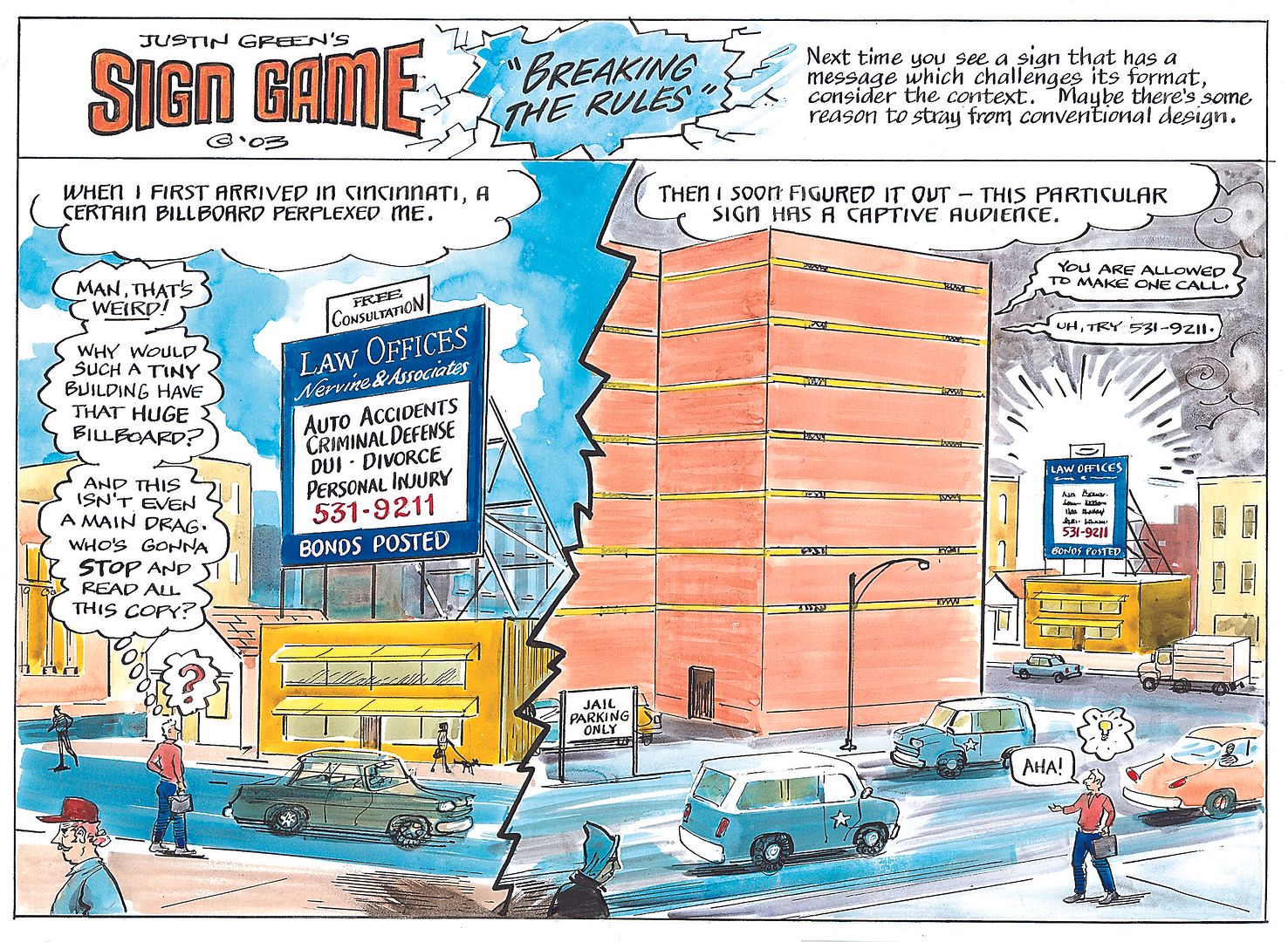There was a time when every street sign, every billboard, and every window display was painted by hand. This sounds unremarkable until you actually think about what that actually means.

Every single sign in existence was made by a sign artist with a paint kit and an arsenal of squirrel- or camel-hair brushes. Some lived an itinerant lifestyle, traveling from town to town, knocking on the doors of local shops, asking if they could paint their signs.

And this was the way things were until as recently as the 1980s when everything was upended by the vinyl plotter. Now, sign-making was faster, easier, and cheaper than ever before. Moreover, vinyl signs didn’t require any skill to make. But over time, they created an environment of anonymity and impermanence.

Hand-painted signs began to disappear. But not completely.

Our contributor Benjamen Walker spoke with Faythe Levine and Sam Macon about their new book and documentary project, Sign Painters, which profiles more than two dozen contemporary sign painters keeping the tradition alive.


Benjamen also spoke with sign painter and cartoonist Justin Green, who draws the comic series Sign Game (among others).

Sam Greenspan also visited New Bohemia Signs in San Francisco to get their take on the sign painting scene. Damon Styer, the store’s owner, was working on a “rickshaw obscura” for the San Francisco Exploratorium.
Sign Painters (the film) premiers in Washington, D.C. on March 30.




Comments (9)
Share
Hi, do you know a old recept for paint for hand sign ona window?
Honest Ed’s in Toronto paints every sign in the store with an in house team.
http://www.youtube.com/watch?v=O0e_4TYWl0Q – One of the painters. They will likely close in the next few years, the property has been sold, but it’s been there for over 65 years.
Shortly after listening to the podcast I walked by a construction site in Seattle where they are building a light-rail station. The site is surrounded by a 20 foot tall plywood fence that is covered with interesting hand-drawn paintings. Here is a link to one photo:
https://plus.google.com/u/0/photos/recent?pid=6023390731697715554&oid=116303589287894629939
My father, Stephen Martin Ehninger, age nearly 67, who has been an Architect with his own successful architecture practice since his age 34, sometimes recalls (as does his wife, my mother, for the past 51 years!) as his “favorite job ever” – the self-appointed job he had in his ages 8-18, painting signs, freelance. His initial B.F.A. was in Graphic Arts, paid for by his volunteer Air Force service during the Vietnam War, and his work with Young Sign Company based in Salt Lake City, Utah. That job was no joke; it was serious enough that it took a great deal of convincing by many people in his life, to move away from Graphic Design, into the realm of Architecture.
Thank you so much for producing this piece; I first heard in on 88.3 FM in Salt Lake City, Utah, between 8:00 p.m. and 12:00 a.m. I ***love*** it!!!!
Wow!
I didnt know the sign-writing market was that big thing during that time period. A lost craft that is now once again an open feild to attain helpful artistic experience.
I guess my age is showing, I’m and graphic designer/commercial artist and my father is a retired graphic designer/commercial artist. I literally grew up in the business. I remember watching my dad, hand-letter display and presentation boards and being in awe of his skills. Myself I attended art school pre-computer, we spent quarters learning the craft of lettering and rendering layouts with markers and pencils. Now we knock those out in minutes on the computer.
Those were the days.
Will we one day be reminiscing about the craft of using a computer as a design tool?
This just popped up on my Facebook and I wanted to share https://www.facebook.com/BBCScotland/videos/2426981530860320/
Keep up the great work! Thank you so much for sharing a great posts.